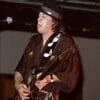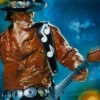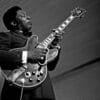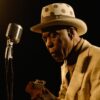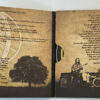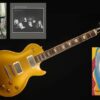Looking for the best bass guitar in 2024? The Yamaha BB735A is a top contender.
With its solid construction, versatile sound, and comfortable playability, the Yamaha BB735A is sure to impress both seasoned professionals and novices alike. Equipped with custom-wound pickups and an active/passive preamp, this bass offers a wide range of tones to suit any musical style.
Its sleek design and high-quality components make it a standout choice for bass players looking for a reliable and high-performing instrument. Whether you’re performing on stage or recording in the studio, the Yamaha BB735A is a top choice for any bassist in 2024.
Choosing The Right Bass Guitar
When it comes to choosing the right bass guitar, there are a few key factors to consider. Whether you’re a beginner or a seasoned player, finding the perfect bass guitar can greatly enhance your playing experience and overall enjoyment. In this article, we’ll explore the important aspects you should keep in mind when selecting your ideal bass guitar.
Define Your Playing Style
To choose the best bass guitar that suits your needs, it’s essential to define your playing style. Are you a funk, jazz, rock, or metal enthusiast? Each genre has unique requirements, and your playing style will determine the type of bass guitar that will complement your sound. For instance, if you prefer a warm and rounded tone, a passive pickup bass might be the right choice. On the other hand, if you desire a punchy and aggressive sound, an active pickup bass could be more suitable.
Consider Different Body Styles
When it comes to bass guitars, body style plays a significant role in both the aesthetics and the sound produced. The most common bass body styles include Precision, Jazz, and Thunderbird. The Precision bass delivers a classic, deep, and rich tone and is favored by many rock and metal bassists. The Jazz bass, known for its sleek shape and versatile sound, is preferred by players who enjoy a wider range of musical styles. The Thunderbird bass, featuring a unique body shape, provides a powerful and distinctive tone, which is often desired in hard rock and metal genres.
If you prefer a lightweight and compact body, a short-scale bass guitar could be a great option. These basses offer excellent playability, especially for those with smaller hands or beginners looking for enhanced comfort. Moreover, the type of wood used in the body can also affect the sound and sustain of the bass guitar. Popular choices include alder, ash, mahogany, and maple. Each wood brings its own tonal characteristics, so it’s worth exploring and experimenting with different options to find the sound that resonates with you.
Additionally, some bass guitars feature a hollow or semi-hollow body which not only adds an extra resonance but also offers a unique tone favored in jazz and blues genres. These guitars provide a warm and lively sound, and can be an excellent choice for players seeking a vintage vibe.
Now that you have a better understanding of the factors to consider when selecting the right bass guitar, you can make a well-informed decision that suits your preferences, style, and musical aspirations. Remember to play various models, explore different body styles and configurations, and, most importantly, trust your own ears to find the bass guitar that will inspire you to play your best.
Top Bass Guitar Brands
When it comes to top bass guitar brands, there are a few names that stand out for their quality, craftsmanship, and innovation. These brands have built a solid reputation and are favored by musicians worldwide for their excellent sound and playability.
Fender
Fender is a legendary brand in the world of bass guitars. The precision and jazz bass models are iconic and have been favored by countless bassists over the years.
Gibson
Gibson is another renowned name in the bass guitar industry. Their Thunderbird and SG bass models are popular for their distinctive tones and sleek designs.
Ibanez
Ibanez is known for producing high-quality bass guitars that offer versatility and playability. Their SR and BTB series are particularly popular among bass players for their great tone and comfortable neck.“
Popular Bass Guitar Models
When it comes to popular bass guitar models, there are several standout options that have become iconic in the music industry. These bass guitars have not only made their mark with their influential sounds but also with their unique designs and playability, making them top choices for bassists worldwide. Let’s take a closer look at a few of these renowned bass guitar models:
Fender Precision Bass
The Fender Precision Bass, also known as the P-Bass, is a legendary instrument that has been a staple in countless genres since its introduction in the 1950s. Known for its versatile tone and comfortable playability, the P-Bass has been the go-to choice for many bassists, including rock, jazz, and funk musicians.
Music Man Stingray
The Music Man StingRay is another beloved bass guitar model that has left a lasting impression on the music world. With its powerful, punchy sound and sleek, ergonomic design, the StingRay has been favored by many prominent bassists, contributing to its widespread popularity across various musical styles.
Rickenbacker 4003
The Rickenbacker 4003 is an iconic bass guitar known for its distinctive jangly tone and elegant, retro aesthetics. This model has been cherished by artists in genres such as rock and alternative music, and its unique sound has solidified its place as one of the most recognizable bass guitars in the industry.

Credit: www.sweetwater.com
Key Features To Look For
When choosing the best bass guitar, it’s important to consider the key features that will contribute to the instrument’s performance and overall sound. By paying attention to factors such as pickup types, neck construction, and tonewood selection, you can ensure that you’re selecting a bass guitar that will meet your musical needs and preferences. Let’s delve into each of these features in more detail.
Pickup Types
The type of pickups on a bass guitar can greatly affect its sound and tone. There are three main types of pickups to consider:
- Single-coil pickups: These pickups produce a bright and crisp tone with enhanced clarity, making them suitable for genres like funk and jazz.
- Split-coil pickups: These pickups offer a balanced and versatile sound, producing a combination of the warm tones of a single-coil pickup and the powerful output of a humbucker pickup.
- Humbucker pickups: Known for their strong output and thicker sound, humbucker pickups are popular among rock and metal bassists who desire a fat and punchy tone.
By considering the genre and style of music you’ll be playing, you can choose the pickup type that will suit your needs and help you achieve the desired sound.
Neck Construction
The construction of the bass guitar’s neck greatly influences its playability and stability. Here are two common neck construction options:
- Bolt-on neck: This type of neck construction involves attaching the neck to the body using screws or bolts. It offers easy adjustability and is known for its bright and snappy tone.
- Neck-through body: In this construction style, the neck extends through the body, providing added sustain and a smooth transition between the neck and body. It offers enhanced access to higher frets and produces a warm and balanced tone.
Consider your playing style and the characteristics you value in a bass guitar to determine which neck construction option will best suit your needs.
Tonewood Selection
The choice of tonewood for the body and neck of a bass guitar significantly impacts its tone and resonance. Here are some common tonewoods used in bass guitar construction:
| Tonewood | Tone |
|---|---|
| Alder | Balanced and versatile |
| Ash | Bright and punchy |
| Maple | Bright and articulate |
| Mahogany | Warm and rich |
Each tonewood offers unique characteristics that can greatly affect the overall sound of the bass guitar. By understanding the tonal qualities of different tonewoods, you can select the one that aligns with your desired sound and playing style.
Amplification And Effects
When it comes to amplification and effects for bass guitars, selecting the right gear can greatly enhance your overall sound and performance. Bass amplification ensures that your low-end frequencies are properly projected and heard, while effects pedals can add depth, texture, and shape to your basslines. In this section, we will explore the different types of bass amplifiers and essential effects pedals that can take your bass playing to the next level.
Bass Amplifier Types
Choosing the right bass amplifier is crucial for achieving the desired tone and projection. Here are the three main types of bass amplifiers:
- Combo Amplifiers: Combo amplifiers feature a built-in speaker and amplifier in a single unit. They are compact and portable, making them ideal for small gigs, rehearsals, and home practice sessions. Combo amps are usually available in various wattages, so you can choose the one that suits your needs.
- Head and Cabinet Amplifiers: Head and cabinet amplifiers consist of a separate amplifier head and a speaker cabinet that are connected with speaker cables. These amplifiers offer more flexibility in terms of combining different heads and cabinets to achieve the desired tone and power. They are commonly used for larger venues and professional performances.
- DI Boxes and Preamps: DI boxes and preamps are used primarily for recording bass guitars or connecting them directly to a mixing console or audio interface. They are designed to provide a clean and balanced signal while allowing for easy signal processing and shaping during the recording or mixing process.
Bass Effects Pedals
Adding effects pedals to your bass guitar setup can greatly expand your sonic possibilities. Here are some essential bass effects pedals:
- Overdrive/Distortion: These pedals add grit and aggression to your bass tone, ranging from smooth overdrive to heavy distortion suitable for rock, metal, and punk genres.
- Compression: Compression pedals even out the dynamic range of your bass signal, resulting in a more consistent and controlled sound. They are widely used to achieve a smooth and punchy tone.
- Octave: Octave pedals generate additional lower or higher octave notes, creating a thicker and fuller sound. They can be used to add sub-bass or create unique bass synth-like sounds.
- Chorus: Chorus pedals add depth and width to your bass sound by creating a rich, swirling effect. They are commonly used in genres like funk and reggae to achieve a more expansive and ensemble-like tone.
- Delay: Delay pedals create echoes and repetitions of your bass signal, adding space and ambience to your playing. They can be used subtly for enhancing your playing or dialed up for more experimental and atmospheric sounds.
- Reverb: Reverb pedals simulate the sound of different acoustic spaces, ranging from small rooms to large concert halls. They add depth and lushness to your bass sound, ideal for creating a sense of space and dimension.
Experimenting with different combinations of amplification and effects pedals can help you find your unique bass sound. Remember to consider factors like your playing style, musical genre, and specific sonic preferences when selecting your amplification and effects gear. With the right setup, you can unleash the full potential of your bass guitar and captivate listeners with a powerful and captivating performance.
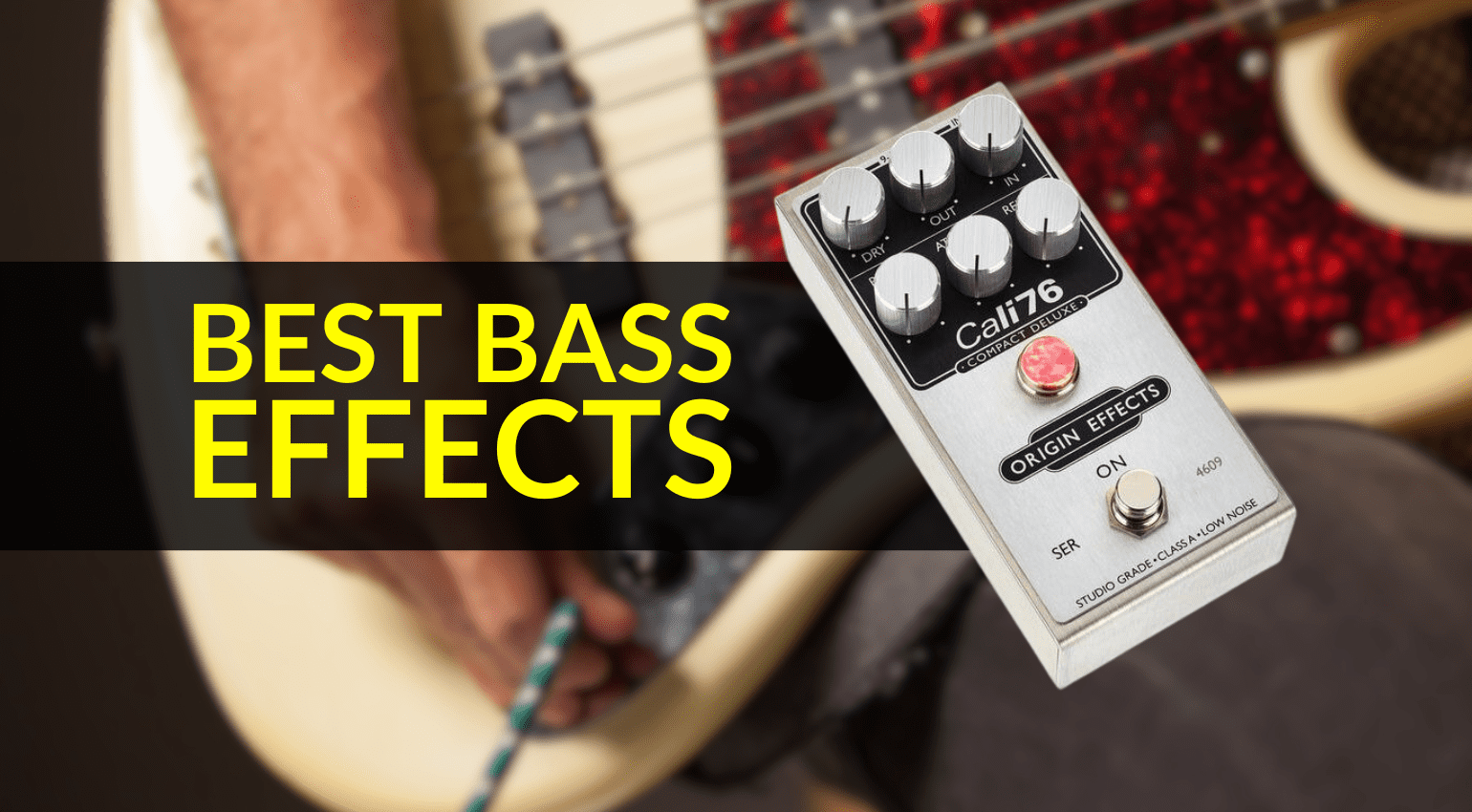
Credit: www.gearnews.com
Understanding Scale Length
Understanding scale length is crucial for selecting the best bass guitar in 2024. It determines the tension and feel of the strings, impacting playability and tone. Be sure to consider scale length when choosing a bass guitar for optimal performance and comfort.
The scale length of a bass guitar is a crucial factor to consider when choosing the right instrument for your needs. It refers to the length of the vibrating portion of the strings from the nut to the bridge of the bass. Understanding scale length is essential as it directly impacts the tone and playability of the bass guitar. Let’s delve into the details to help you make an informed decision.
Impact On Tone
The scale length of a bass guitar significantly affects the instrument’s tone. A longer scale length produces more tension on the strings, resulting in a brighter and punchier sound. The extra tension allows for greater sustain and clarity, making it ideal for genres that require a strong attack and defined notes. If you often play genres like funk, rock, or metal, a bass guitar with a longer scale length might be the perfect fit for you. On the other hand, a shorter scale length produces a warmer and rounder tone. The reduced tension on the strings results in a mellower sound, making it ideal for genres like jazz or blues. Consider your preferred playing style and musical genre when deciding on the scale length that suits your needs.
Impact On Playability
The scale length of a bass guitar also has a significant impact on playability. A longer scale length leads to greater string tension and wider spacing between the frets. This can be beneficial for players with larger hands as it provides more room for comfortable finger placement. Moreover, a longer scale length generally offers a more elongated neck, enabling easier access to higher frets. However, for players with smaller hands or those seeking a more compact instrument, a shorter scale length can be advantageous. The reduced string tension and closer fret spacing make it easier to navigate the neck, especially for beginners or players who prefer a lighter touch. Consider your hand size and playing technique when choosing the right scale length for optimal playability. Remember, when deciding on the scale length of a bass guitar, it’s essential to consider both the impact on tone and playability. Finding the right balance between the two factors will help you achieve the desired sound and enjoy a comfortable playing experience. Take your time to explore different options, try out various bass guitars, and consider what works best for your unique style and preferences.
Different String Options
When it comes to bass guitars, choosing the right strings is crucial to achieve the desired sound and playability. Different string options can greatly impact the tone, feel, and even the longevity of your instrument. In this section, we will explore two crucial factors to consider when selecting bass guitar strings: Roundwound vs. Flatwound Strings and String Gauges and Tension.
Roundwound Vs. Flatwound Strings
Bass guitar strings come in two popular varieties: roundwound and flatwound. Each type offers a distinct feel and sound that caters to different playing styles and musical genres.
| Roundwound Strings | Flatwound Strings |
|---|---|
|
Roundwound strings are the most common choice among bassists due to their versatility and bright, punchy tone. These strings are made by wrapping a round wire around a core wire, creating a textured surface. The textured surface enhances the articulation and brightness of the sound, making them ideal for genres like rock, pop, funk, and metal. Roundwound strings also provide more sustain and allow for easier sliding and bending. |
Flatwound strings, on the other hand, have a smooth, flat surface due to the process where the outer wire is flattened. This results in a warmer and more mellow tone, making them perfect for jazz, blues, and other genres that require a vintage sound. Flatwound strings produce less finger noise and are more comfortable to play due to their smoother surface. However, they offer less brightness and sustain compared to roundwound strings. |
String Gauges And Tension
String gauges refer to the thickness of the strings, which can greatly impact playability and the overall feel of your bass guitar. The gauge you choose depends on factors such as your playing style, musical genre, and personal preference.
Typically, bass guitar strings are available in four main gauge ranges: light, medium, medium-heavy, and heavy. Lighter gauge strings are easier to play and provide a brighter tone, while heavier gauge strings offer more tension and produce a richer, deeper sound. Experimenting with different gauges can help you find the perfect balance between playability and tone.
It’s important to note that changing the string gauge can affect the setup of your bass guitar. Adjustments to the truss rod, bridge height, and intonation might be necessary to maintain proper playability and optimal sound quality.
In conclusion, understanding the different string options for your bass guitar is essential in achieving the desired tone and playability. Whether you choose roundwound or flatwound strings, and opt for a specific string gauge, it’s recommended to experiment and find the combination that best suits your playing style and musical preferences. Remember, the right strings can make a significant difference in your bass playing experience!
Proper Bass Guitar Setup
Bass guitar setup is crucial for achieving a great sound and playability. By paying attention to the adjustment of action, intonation, and truss rod, you can ensure your bass guitar performs at its best. Let’s dive into the key aspects of proper bass guitar setup.
Adjusting Action And Intonation
Proper bass guitar setup includes adjusting the action and intonation. The action refers to the height of the strings from the fretboard, while intonation refers to the accuracy of each note’s pitch across the fretboard.
Truss Rod Adjustment
The truss rod is crucial for maintaining the neck’s straightness and relieving any bowing caused by string tension. Adjusting the truss rod ensures the stability and playability of your bass guitar.
Maintaining Your Bass Guitar
Proper maintenance is crucial for getting the best performance out of your bass guitar. Take care of your instrument with regular cleaning, string changes, and adjustments to ensure optimal sound and playability.
Maintaining Your Bass Guitar As a bass guitar player, taking proper care of your instrument is crucial to ensure it remains in top condition and continues to deliver the best sound. You can achieve this by regularly cleaning and polishing your bass guitar, as well as understanding the essential tips for changing the strings. Let’s explore these maintenance practices in more detail. Cleaning and Polishing < h3 >Cleaning and Polishing< /h3 > To maintain the pristine appearance of your bass guitar, use a soft, lint-free cloth to wipe down the body, neck, and strings after each session. For stubborn grime, lightly dampen the cloth with water or a specialized guitar cleaning solution. Avoid using harsh chemicals or abrasive materials that could damage the finish. String Changing Tips < h3 >String Changing Tips< /h3 > When changing your bass guitar strings, use a string winder to expedite the process and prevent strain on the tuning pegs. Consider applying a small amount of lubricant to the nut and bridge to facilitate smooth string movement and reduce friction. Additionally, remember to stretch the strings gently after installation to minimize tuning instability. Taking these steps to maintain your bass guitar will not only keep it looking and sounding great but also prolong its lifespan. Regular cleaning and proper string care are essential practices for any bass player committed to achieving the best performance from their instrument.
Bass Guitar Accessories
If you own a bass guitar or are planning to get one, investing in the right accessories can greatly enhance your playing experience. Whether you’re a beginner or a seasoned bassist, having the right gear can make a world of difference. In this section, we will explore two important bass guitar accessories: straps and strap locks, and the eternal debate of gig bags vs. hard cases.
Straps And Strap Locks
When it comes to playing the bass guitar, a comfortable and secure strap is essential. A good strap not only allows you to play for longer periods without discomfort but also helps to properly balance the weight of the instrument. Strap locks, on the other hand, are small accessories that attach to the strap buttons on your bass guitar and prevent the strap from accidentally coming off. With strap locks, you can play with confidence, knowing that your guitar is securely attached to you.
Gig Bags Vs. Hard Cases
Now, let’s talk about the age-old debate: should you go for a gig bag or a hard case to protect your beloved bass guitar? Well, the answer depends on your specific needs and preferences. Gig bags are lightweight and convenient, making it easy to transport your instrument. They often come with backpack-style straps, making it comfortable to carry your bass on your back. On the other hand, hard cases provide maximum protection for your instrument. With their rigid exterior and cushioned interior, they offer superior protection against bumps, falls, and other accidents that may occur during transportation. Ultimately, the choice between a gig bag and a hard case boils down to how much protection you need and how often you’ll be taking your bass on the road.
Playing Techniques
Playing techniques are crucial for every bass guitarist to master. The way you play the bass guitar greatly impacts the tone and overall sound of your music. In this blog post, we will explore two popular techniques: thumb slap and pop, as well as the debate between fingerstyle and pick playing.
Thumb Slap And Pop
One of the most distinctive techniques used by bass guitarists is the thumb slap and pop. This technique involves using the thumb to strike the strings against the fretboard, creating a percussive and rhythmic sound. It is commonly used in funk, slap bass, and some rock music genres.
The thumb slap and pop technique allows bass guitarists to create a solo-like effect by incorporating slapping and popping sounds into their playing. This technique adds dynamic and groovy elements to basslines, making them stand out in a mix.
Fingerstyle Vs. Pick Playing
The choice between fingerstyle and pick playing is a matter of personal preference for bass guitarists. Both techniques have their pros and cons, and it ultimately depends on the style of music you’re playing and the sound you want to achieve.
Fingerstyle playing involves using the fingers to pluck the strings individually. It provides more control and flexibility, allowing bass guitarists to execute intricate and complex musical passages. Fingerstyle playing is commonly associated with genres like jazz, blues, and progressive rock.
On the other hand, pick playing involves using a guitar pick to strike the strings. This technique gives a brighter and more defined sound, which works well for genres like punk, metal, and pop. It provides a consistent attack and can help bass guitarists maintain a steady rhythm.
Regardless of the technique you choose, the key to becoming a proficient bass guitarist lies in practicing extensively and experimenting with different techniques. Explore what suits your playing style and musical preferences, and let your creativity shine through your bass guitar.
Essential Bass Guitar Scales
If you want to become a great bass player, mastering essential bass guitar scales is crucial. These scales provide the foundation for basslines and melodies, helping you create depth and groove in your playing. In this section, we will explore two important scales: major and minor scales, and pentatonic and blues scales.
Major And Minor Scales
The major and minor scales are the building blocks of music theory. The major scale is known for its bright and happy sound, while the minor scale brings a darker and more introspective vibe.
Major Scale: The major scale follows a specific pattern of whole and half steps, resulting in a sound that feels uplifting and positive. It is often used in various musical genres, including pop, rock, jazz, and classical. Learning the major scale in different keys will give you a solid foundation for improvisation and composing basslines.
Minor Scale: The minor scale has a more melancholic and emotional quality than the major scale. It is commonly associated with rock, blues, and jazz music due to its ability to convey a sense of depth and tension. Being familiar with the minor scale in different positions on the fretboard will enable you to play soulful basslines, add interesting color to your improvisations, and create a captivating atmosphere in your compositions.
Pentatonic And Blues Scales
The pentatonic and blues scales are essential for creating a bluesy feel in your bass playing. Whether you enjoy playing blues, rock, or funk, these scales will add a touch of soulfulness and authenticity to your basslines.
Pentatonic Scale: The pentatonic scale is a five-note scale that is widely used in blues, rock, and pop music. Its simplicity and versatility make it a favorite among bass players. By learning the pentatonic scale and its different positions on the fretboard, you will be able to create catchy basslines, improvise solos, and add melodic flair to your playing.
Blues Scale: The blues scale is closely related to the pentatonic scale but incorporates an additional note called the “blue note.” This note adds a unique and distinct blues flavor to your basslines. Alongside the pentatonic scale, the blues scale is a crucial tool for bass players who want to master blues, jazz, and rock genres. Obtaining a strong command of the blues scale will give you the ability to inject passion, intensity, and emotion into your bass playing.
Exploring Different Musical Genres
Rock And Metal Bass Techniques
Rock and metal music are known for their heavy and powerful sound, and the bass guitar plays a crucial role in creating that signature sound. The bassist in a rock or metal band has the responsibility of driving the rhythm and providing a solid foundation for the other musicians. Here are some popular bass techniques used in rock and metal:
- Palm muting: This technique involves resting the palm of your hand on the strings near the bridge to create a muted and percussive sound. It adds a punchy and dynamic quality to your basslines.
- Slap and pop: Slap bass is a technique where you strike the strings with the thumb and pop the strings with your fingers. It creates a funky and percussive sound that cuts through the mix.
- Double stops: This technique involves playing two notes simultaneously, usually on adjacent strings. It adds thickness and power to your basslines, especially during guitar solos or heavy riffs.
Funk And R&b Grooves
Funk and R&B genres are all about grooves and rhythms that make you want to move. The bass guitar is a key element in creating those infectious grooves that get people on the dance floor. Here are some techniques commonly used in funk and R&B:
- Slap and pop: Similar to rock and metal, slap bass adds a funky and percussive sound to your basslines. The popping technique, where you pluck the strings with your fingers, creates a sharp and rhythmic sound.
- Ghost notes: Ghost notes are lightly played or muted notes that add a subtle groove to your basslines. They help create a syncopated and funky rhythm that is characteristic of funk and R&B music.
- Syncopation: Syncopation is the art of emphasizing the off-beats, creating a funky and danceable rhythm. By accenting the upbeats and playing around the beat, you can give your basslines that infectious groove.
Setting Up Your Practice Routine
When it comes to playing bass guitar, setting up a regular practice routine is crucial for honing your skills and becoming a proficient musician. By dedicating specific time to practice and following a structured routine, you can enhance your finger strength, develop a keen ear for music, and improve overall technique. Here are some essential elements to consider when creating a practice routine for your bass guitar journey.
Developing Finger Strength
To improve your bass playing abilities, engaging in exercises that focus on developing finger strength is essential. These exercises help build dexterity and endurance in your fingers, allowing you to execute complex bass lines with precision. Incorporate techniques such as finger stretching, finger-strength-specific exercises, and fretting drills into your practice routine to strengthen your fingers and improve overall dexterity.
Ear Training Exercises
Ear training is an indispensable aspect of mastering the bass guitar. By sharpening your ears, you can better recognize notes and tones, play in harmony with other musicians, and improve your improvisational skills. Incorporate ear training exercises into your practice routine, such as identifying intervals, transcribing bass lines by ear, and playing along with various styles of music. This will enhance your musical ear and overall proficiency as a bassist.
Joining A Bass Community
Joining a Bass Community can significantly enhance your experience as a bass player and open up opportunities for growth and networking. Whether you’re a seasoned player or just starting out, being part of a community can provide support, inspiration, and valuable resources to help you improve your skills and connect with other like-minded individuals.
Finding Local Jam Sessions
Local jam sessions are an excellent way to connect with other bass players, drummers, guitarists, and vocalists in your area. By participating in local jam sessions, you can gain firsthand experience playing with other musicians, learn new techniques, and expand your musical repertoire. These sessions often take place in music venues, community centers, or even at local music stores, providing a casual and collaborative environment to hone your skills and make new friends.
Online Resources And Forums
Online resources and forums offer a wealth of information and networking opportunities for bass players. You can explore online forums and communities to seek advice, share experiences, and discover new techniques and gear. Additionally, many websites and social media groups host virtual jam sessions, live Q&A sessions with professional bassists, and in-depth tutorials to help you improve your playing from the comfort of your own home.

Credit: www.facebook.com
Recording And Performing With Your Bass
Recording and performing with your bass guitar is an exhilarating experience, allowing you to showcase your skills and create memorable music. Whether you’re laying down tracks in the studio or rocking out on stage, it’s essential to have the right equipment and stage presence to make a lasting impact. In this article, we’ll explore two important aspects of recording and performing with your bass: DI Box and Amp Mic’ing, as well as some stage presence tips to take your performances to the next level.
Di Box And Amp Mic’ing
When it comes to recording your bass guitar, you have two primary options: using a DI (Direct Input) box or amp mic’ing. A DI box allows you to directly connect your bass guitar to the recording equipment, capturing the clean signal without any external amplification. This method is perfect for achieving a clean and direct sound in the studio, especially when you’re looking to add effects and post-production magic.
On the other hand, amp mic’ing involves placing a microphone in front of your bass guitar amplifier to capture the sound it produces. This method adds warmth and character to your recordings, as the microphone captures not only the bass guitar’s sound but also the nuances of the amplifier’s tone. Amp mic’ing is a popular choice for those seeking a more organic and dynamic sound, particularly in live performances.
Stage Presence Tips
Having great stage presence is essential for engaging your audience and leaving a lasting impression. Here are a few tips to enhance your stage presence:
- Make eye contact with the audience to establish a connection and show confidence.
- Maintain good posture and move around the stage to command attention.
- Engage with your bandmates, creating a cohesive and energetic performance.
- Interact with the crowd by encouraging clapping, singing along, or even inviting them on stage for a memorable experience.
- Inject your unique personality into your performance through facial expressions and body language.
Remember, stage presence is about captivating your audience and making them feel a part of the musical journey. Practice these tips and develop your own style to create memorable performances.
Customizing Your Bass Guitar
When it comes to playing the bass guitar, having a personalized instrument can make all the difference in your playing experience. Customizing your bass guitar allows you to not only tailor it to your specific needs but also to showcase your unique style and personality. From upgrading pickups and electronics to personalizing the finish, there are several ways you can transform your bass guitar into an instrument that truly reflects who you are as a musician.
Upgrading Pickups And Electronics
One of the first areas to consider when customizing your bass guitar is the pickups and electronics. These components play a crucial role in shaping the tone and overall sound of your instrument. Upgrading to higher-quality pickups can enhance clarity, articulation, and sustain. Whether you’re looking to achieve a warm and vintage tone or a modern and aggressive sound, there are various pickup options available to suit your preferences.
Additionally, replacing the electronics on your bass guitar can offer new possibilities for tone shaping. Installing an active preamp can provide a boost in output level and a wider range of equalization controls, allowing you to fine-tune your sound to perfection. On the other hand, if you prefer a more traditional tone, swapping out your existing electronics for high-quality passive components may be the way to go.
Personalizing The Finish
The finish of your bass guitar is what catches the eye and sets it apart from the rest. Personalizing the finish allows you to make a statement and create an instrument that is as visually appealing as it is musically inspiring. There are several options available when it comes to customizing the finish of your bass guitar.
One option is to create a custom paint job or graphic design. This can range from a simple solid color to intricate artwork that showcases your individuality. You can work with a professional painter or even try your hand at DIY painting to achieve the desired look.
Moreover, you may consider a more natural approach by using various wood stains and finishes to highlight the beauty of the instrument’s wood grain. This can give your bass guitar an elegant and timeless appeal.
Another way to personalize the finish is by adding custom inlays to the fretboard. These inlays can be made from materials such as mother of pearl or abalone and can feature unique designs or patterns that hold personal significance to you.
By customizing the pickups and electronics and personalizing the finish of your bass guitar, you can truly make it your own. Whether you’re a professional musician or a beginner, having an instrument that is tailored to your preferences can greatly enhance your playing experience and inspire creativity.
Budgeting For A Bass Guitar
When it comes to purchasing a bass guitar, budgeting is an essential step that should not be overlooked. With a wide range of options available, it’s important to find the right balance between quality and cost to suit your needs and preferences. In this section, we will explore different factors to consider when budgeting for a bass guitar, including the decision between used and new instruments.
Balancing Quality And Cost
One of the most important considerations when budgeting for a bass guitar is finding the perfect balance between quality and cost. While it may be tempting to opt for the cheapest option available, it’s crucial to remember that investing in a higher quality instrument can greatly enhance your playing experience and overall sound. To strike the right balance, consider prioritizing certain features or brands that offer excellent quality without breaking the bank.
Here are a few tips to help you find the right balance:
- Research different brands and models that are known for their quality bass guitars.
- Consider seeking recommendations from experienced bass players or online communities.
- Compare prices from different retailers to ensure you’re getting a fair deal.
- Read reviews and watch demo videos to get a better understanding of the instrument’s performance.
Used Vs. New Instruments
Another factor to consider when budgeting for a bass guitar is whether to purchase a used or new instrument. While new guitars offer the advantage of being in pristine condition, used guitars can often provide better value for money. However, it’s important to thoroughly inspect a used instrument before making a purchase to ensure it is in good playing condition.
Here are some pros and cons of used and new bass guitars:
| Used Bass Guitars | New Bass Guitars |
|---|---|
| Lower cost | Fresh out of the box |
| Can have unique character and vintage appeal | Comes with warranty and customer support |
| Potential wear and tear | No previous owner |
Ultimately, the decision between used and new instruments depends on your personal preferences and budget constraints. If you’re willing to invest more in a brand-new instrument and prioritize peace of mind, a new bass guitar may be the best choice for you. However, if you’re on a tighter budget and appreciate the character of a used instrument, exploring the used market can provide exciting options.
Seeking Professional Guidance
Get the best bass guitar for 2024 by seeking professional guidance. Expert advice ensures you make the right choice for your music journey.
Finding A Qualified Bass Teacher
If you are serious about taking your bass guitar skills to the next level in 2024, finding a qualified bass teacher can make all the difference. A professional teacher can provide personalized guidance, help you correct bad habits, and build a strong foundation for your playing. When searching for a bass teacher, look for someone who has years of experience playing and teaching bass guitar. It’s important to find someone who understands your goals and can tailor their lessons to your specific needs.
- Look for a bass teacher with a strong musical background and a deep understanding of different music genres.
- Consider their teaching methods and see if they align with how you learn best. Some teachers focus more on music theory, while others emphasize practical playing techniques.
- Ask for recommendations from other musicians or check online reviews to ensure the teacher has a good reputation and a track record of helping students improve.
- Don’t be afraid to reach out and have a conversation with potential teachers to get a sense of their teaching style and to see if you have good chemistry.
Workshops And Masterclasses
Attending workshops and masterclasses can be a great way to further enhance your bass guitar playing skills and broaden your musical horizons. These events often feature renowned bassists who are experts in their field. They provide opportunities to learn from the best and gain valuable insights into their techniques and approaches. Here are a few reasons why you should consider attending workshops and masterclasses:
- You can learn advanced techniques and tips that you may not come across in regular lessons.
- These events often include live demonstrations and performances, allowing you to witness the skill and mastery of talented bassists up close.
- You can interact with other passionate musicians, share experiences, and form valuable connections within the music community.
- Attending workshops and masterclasses can inspire you to explore different music styles and experiment with new playing techniques.
In conclusion, seeking professional guidance is crucial if you want to develop your bass guitar skills in 2024. Finding a qualified bass teacher who understands your goals can help you progress faster and avoid common pitfalls. Additionally, attending workshops and masterclasses can expose you to new ideas and broaden your musical horizons. So be proactive in seeking out these opportunities and watch your bass guitar playing soar to new heights!
Conclusion And Future Trends
As the bass guitar continues to evolve, it’s evident that the integration of technology and sustainable materials in bass construction will play a pivotal role in shaping the future of this instrument. Let’s delve into these future trends with an exciting look at what lies ahead for bass guitar enthusiasts.
Integration Of Technology
The future of bass guitars will see a significant emphasis on integrating technology to enhance the playing experience. From advanced pickups and onboard digital effects to connectivity with digital devices, technology will allow bassists to explore new sonic territories and streamline their creative process.
Sustainable Materials In Bass Construction
Sustainable materials are set to revolutionize bass construction, offering eco-friendly alternatives without compromising on quality and tone. With an increasing focus on environmental sustainability, bass manufacturers are embracing materials such as reclaimed wood, responsibly sourced tonewoods, and innovative composites to create instruments that resonate with both musicians and environmental enthusiasts.
Frequently Asked Questions For Best Bass Guitar 2024
What Are The Best Bass Guitar Brands In 2024?
The top bass guitar brands in 2024 are Fender, Yamaha, Ibanez, Gibson, and Music Man.
How Do I Choose The Right Bass Guitar?
Consider factors like your playing style, budget, tonal preferences, and the instrument’s feel and sound when choosing a bass guitar.
Which Type Of Bass Guitar Is Suitable For Beginners?
Beginners often find electric bass guitars easier to play and learn on due to their smaller size, lighter weight, and versatility.
What Are The Essential Accessories For A Bass Guitar?
Essential bass guitar accessories include a carrying case, tuner, strap, extra strings, and a quality amplifier for optimal sound production.
How Frequently Should I Change Bass Guitar Strings?
It’s recommended to change bass guitar strings every 3-6 months or when they start showing signs of wear, losing brightness or becoming difficult to tune.
Can I Play A Bass Guitar Through A Guitar Amplifier?
While it is possible, it is not ideal. Bass guitars need amplifiers designed specifically for them to achieve proper low-frequency response.
What Is The Difference Between Passive And Active Bass Guitars?
Passive bass guitars have a more traditional sound, while active ones offer more tonal options and the ability to boost or cut frequencies.
Are There Left-handed Bass Guitars Available?
Yes, many brands offer left-handed bass guitars to accommodate left-handed players.
What Is The Typical Weight Of A Bass Guitar?
The average weight of a bass guitar ranges from 8 to 12 pounds, though this can vary depending on the specific model and materials used.
How Can I Protect My Bass Guitar From Damage?
To protect your bass guitar, use a high-quality case, avoid extreme temperatures and humidity, regularly clean and maintain the instrument, and handle it with care.
Conclusion
To sum up, the best bass guitar for 2024 offers a perfect balance between quality, playability, and sound. Whether you’re a seasoned musician or just starting out, investing in a top-notch bass guitar is key. By considering factors such as build quality, tonal versatility, and price range, you can find the perfect instrument to suit your needs.
So, get ready to unleash your musical potential and embark on a groovy journey with the best bass guitar of 2024.





